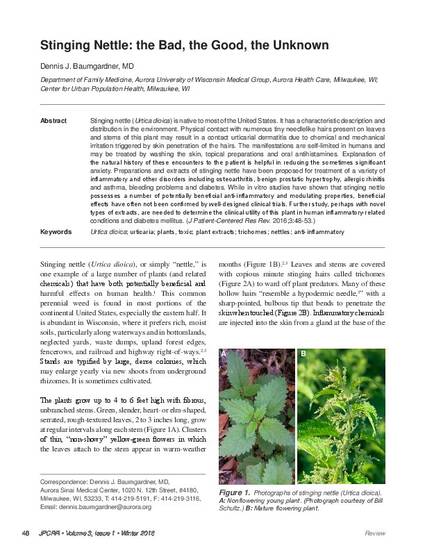
- Urtica dioica; urticaria; plants,
- toxic; plant extracts; trichomes; nettles; anti-inflammatory
Stinging nettle (Urtica dioica) is native to most of the United States. It has a characteristic description and distribution in the environment. Physical contact with numerous tiny needlelike hairs present on leaves and stems of this plant may result in a contact urticarial dermatitis due to chemical and mechanical irritation triggered by skin penetration of the hairs. The manifestations are self-limited in humans and may be treated by washing the skin, topical preparations and oral antihistamines. Explanation of the natural history of these encounters to the patient is helpful in reducing the sometimes significant anxiety. Preparations and extracts of stinging nettle have been proposed for treatment of a variety of inflammatory and other disorders including osteoarthritis, benign prostatic hypertrophy, allergic rhinitis and asthma, bleeding problems and diabetes. While in vitro studies have shown that stinging nettle possesses a number of potentially beneficial anti-inflammatory and modulating properties, beneficial effects have often not been confirmed by well-designed clinical trials. Further study, perhaps with novel types of extracts, are needed to determine the clinical utility of this plant in human inflammatory-related conditions and diabetes mellitus.
Baumgardner DJ. Stinging nettle: the bad, the good, the unknown. J Patient Cent Res Rev. 2016;3:48-53. doi: 10.17294/2330-0698.1216
